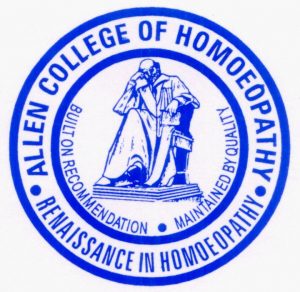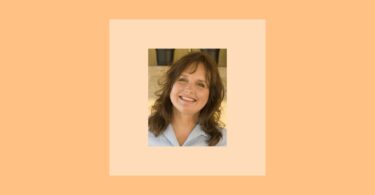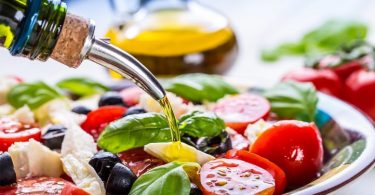Fifteen years ago I didn’t know what Homeopathy was and I had never heard of it. Now I sleep with the Boerike’s Materia Medica by my bed. Over the last year it has become imprinted on my soul and is an intrinsic part of who I am and what I believe in.
I qualified as a Paediatric nurse in 2002 and I have worked happily for 14 years as a children’s nurse, initially a scrub nurse in theatres, then in a hospice and finally as a medical and surgical nurse on the wards. It’s an incredibly satisfying vocation, however it has its limitations and frustrations as I discovered more in-depth only when I had my own family.
When my first son was born he suffered with repeated bouts of tonsillitis. Through recommendations of friends I sought advice from a local homeopath. It was the reluctance on my part to repeatedly give him antibiotics which led me to look for alternatives and having witnessed tonsillectomies first hand I could not willingly put my child through such a painful procedure without first exploring all avenues. I must admit I didn’t think much on it at the time. She treated him and the episodes subsided. Isn’t that the way of us humans? We only pay attention initially when something fails to work.
My second son was born 2 years later and again this time we were to be plagued with repeated bouts of ear infections. The perforation of his eardrum again led me to the homeopath, and again these episodes subsided, gently over the course of a year.
I could not tell you what they were given as remedies, as I never asked and I presumed it would work. Once again I didn’t think on it, until 4 years later when I was expecting my third baby.
I had suffered with acute and debilitating mastitis after both of the boys were born and was almost hospitalised with my second child. On both occasions I had antibiotics and on both occasions the boys developed colic around this time. With my third baby, I was blessed to be able to have a private midwife who was aware of my tendency to developing the mastitis and came armed with a homeopathic remedy when I called for help as the symptoms set in once again.With a fever and rigours (shaking/trembling due to extreme pyrexia) pain and redness, I thought I was once again doomed to have antibiotics on the menu. I was sceptical when my midwife placed a tiny crumb on my tongue which I now know to be a globule and I was blown away when within 15 minutes my fever had subsided. This was a revelation to me as a trained nurse, since I thought only paracetamol and ibuprofen had these apyrexial properties.
This was my light bulb moment. Even feeling rather poorly at this point, I knew I had to know more about this mystery medicine. Belladonna was its name and it still holds a special place in my esteem. It saved me from yet another course of antibiotics, and allowed me to continue to rest and enjoy my baby rather than sit in an emergency room for at least 4 hours. Unbeknownst to me this was the switch which turned me into a budding homeopath.
I now know Belladonna like a friend. I know her abilities, her miasms and can spot her when she is needed. Belladona is quick, hot, red, dry and fearful of touch and was my saviour that day.
It was on returning to work after my last baby when I realised something was missing, something lacking in my work as an allopathic nurse. I needed a new challenge, another arrow to my bow. We moved house shortly after my daughter’s birth and found a house with a converted garage/office space. Little did I know what I would actually end up using it for and remain ever grateful for having it.
Shortly after the move I started researching Homeopathic teaching institutions and narrowed it down to two. I visited both and found the Allen College in Chelmsford fitted the bill. I asked to sit in on a session and stayed the entire day. I was hooked!
I will admit I was concerned that it would be too “wishy washy” and alternative for my liking. Coming from a medical background I needed it to be practical, professional and straight talking. I found what I needed in Allen College. The tutors inspired me and I continue to enjoy and expand my knowledge of anatomy and physiology/pathophysiology which is taught alongside the Materia Medica.
At Allen College we have immediate contact with real patients and start taking cases under direct supervision and in joint clinics which is a wonderful opportunity and truly the best way to learn.
I am now a second year student and have some of my own patient cases under my belt. I can honestly say I have never enjoyed studying so much. I can read for hours and get lost in the texts. A bonus is the satisfaction of seeing patients improve in front of my eyes.
As a more mature student of homeopathy I now know why I am suited to this particular course. It teaches Classical Homeopathy and adheres to the guidelines of the Organon ‘Similia Similibus Curentur’ in teaching the use of the single, similar remedy. During my allopathic work, I have often found it hard to believe that one patient can be on so many drugs. Surely we can no longer dissect the side effects from the diseased state. The singular way of prescribing that I am learning now enhances my ability to learn as a practitioner. We can acutely observe the effects of remedies’ and learn as such. If we throw 5 or 6 at a patient, how are we to know which one has made him better?
In class we also learn pure Materia Medica, learning our remedies inside out. It is only now, further down in my studies, that I hear that some colleges only teach Repertorisation, using a dictionary as such to find the remedies. I love the Materia Medica content of the course and it gives us such a grounding in our subject and a confidence in our prescribing I simply cannot imagine another way.
My five-year plan is to complete the course and set up a private clinic in my office, but I do intend to keep my nursing career alongside, as I feel it is invaluable to me as a practitioner. It keeps me in touch with the allopathic medical world we currently live in and I can work with a better understanding of what is needed to collaborate with GPs and other professionals’. This is a fundamentally important part of being a responsible homeopath and will help us to secure a place one day amongst those treating the individuals who need us.
Homeopathy has lots of answers and cures but of course it cannot fix an umbilical hernia, obstructed bowel, reattach a limb or give us the diagnosis that some people need. It has limitations just as allopathic medicine does. Lots of allopathic drugs we use elicit a desired effect, but also lots of undesired effects. For example, morphine is a fantastic analgesic but commonly causes extreme nausea and/or delirium and potentially respiratory suppression, sometimes a hefty price to pay!
The more homeopathic knowledge I gain the more I wish to see it used effectively, complementing allopathic practice. How I would love to see it side by side with the treatments we give in hospital, or that are commonly offered in GP practices. This ambition is a difficult one as it involves convincing our allopathic colleagues who may be sceptical that homeopathy is a viable medical system. I have already met ridicule head on from an anesthesia colleague (probably the most difficult group to convince). It is only by continuing to work professionally and accountably and taking ourselves seriously that we can one day achieve this place securely.
In my current workplace, I foresee Arnica, amongst other haemostatic remedies being used with our dental extraction patients, with individualisation paramount obviously. Herein lies the tricky part; this individualisation can take some time which is what we lack on the frontline of healthcare. However, I do believe that a well-trained homeopath could be as quick as is needed in determining the right remedy.
Personally, I envisage myself as a homeopath with a special interest in children as they are so susceptible to the effects of homeopathy, and its proper miasmatic use can prevent future disease. (Miasmatic prescribing, Dr S. Banerjea, 2001) Starting with the young patient we can prevent disease and maintain them through the milestones and stresses of a modern life. As a society we are coming full circle, realising the long term effects of toxic chemicals, crude drugs and vaccinations. Parents are looking for gentler alternatives and help in combating the negative consequences of a modern life. I look forward to being a part of this wonderful complementary process.
References:
Dr. Subrata K. Banerjea, 2001, Miasmatic Prescribing:2
Hahnemann, 2015, Organon of Medicine: 40








Wonderful story, Katie! You are on track to make a huge difference in many lives, and I wish you continued good luck with your efforts to spread Homeopathy among medical professionals. ( I have used remedies for about 20 years, and I prefer the singles , too)
Beautifully told story, thank you Katie!
Warmly welcome for sharing true experience. I appreciate your courage to admit truth. You are one of them, who admit truth. Very very few people around the world are like this. History is with us…………… have a good journey!
Hi Katie Lovely article. You mention umbilical hernia in your article. There is only one remedy mentioned in my rep for this and it is Nux Moschata. (Nutmeg). It was interesting for me that the person who had this condition that their father was a baker. They displayed almost all the mental aspects of this remedy. I never got an opportunity to give them the remedy as they already had surgery for the hernia.
One of the best homeopathic remedies: Belladonna.